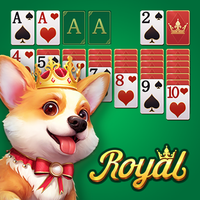Dire Wolves Revived Through Scientific Breakthroughs
Bringing a super-sized canine back from extinction after 12,500 years might sound like the plot of a blockbuster movie filled with special effects, but it's become a reality thanks to the efforts of Colossal Biosciences. This biotech company has successfully revived three dire wolves, now residing in a secret location in the US.

Colossal Biosciences, driven by what might seem like extreme Game of Thrones fandom, used the DNA of the common gray wolf, gene-editing techniques, and domestic dog surrogates to bring to life Romulus, Remus, and their younger sister, Khaleesi. These dire wolves are everything a mother of dragons could dream of—huge, white, and simply awe-inspiring.
Ben Lamm, CEO of Colossal, expressed immense pride in the team's achievement, stating, “This massive milestone is the first of many coming examples demonstrating that our end-to-end de-extinction technology stack works.” The team's efforts involved extracting DNA from a 13,000-year-old tooth and a 72,000-year-old skull, resulting in healthy dire wolf puppies. Lamm highlighted the magical aspect of their technology, saying, “It was once said, ‘any sufficiently advanced technology is indistinguishable from magic.’ Today, our team gets to unveil some of the magic they are working on and its broader impact on conservation.”

This isn't the first time Colossal Biosciences has captured headlines. Previously, they engineered a Colossal Woolly Mouse, resembling a mammoth, using computational analysis of 59 woolly, Columbian, and steppe mammoth genomes spanning from 3,500 to over 1,200,000 years old. Critics argue that the dire wolves are essentially normal wolves in fancy dress, suggesting that the dire wolf DNA available today isn't sufficient for a true genetic clone.
However, Colossal Biosciences' mission extends beyond creating social media sensations or owning extraordinary pets. The company aims to leverage its findings to preserve current species for future generations. Dr. Christopher Mason, a scientific advisor and board member of Colossal, emphasized the transformative nature of their work, stating, “The de-extinction of the dire wolf and an end-to-end system for de-extinction is transformative and heralds an entirely new era of human stewardship of life.”
Mason further explained that the technologies used to create the dire wolves could also help save other endangered animals, marking a significant advancement in genetic engineering for both science and conservation. He noted, “This is an extraordinary technological leap in genetic engineering efforts for both science and for conservation as well as preservation of life, and a wonderful example of the power of biotechnology to protect species, both extant and extinct.”
Colossal Biosciences has collaborated with the American Humane Society and the USDA to ensure the well-being of the dire wolves, who live on a 2,000+ acre preserve. These superstars are cared for by a dedicated team, ensuring their health and safety.
Latest Articles















![Roblox Forsaken Characters Tier List [UPDATED] (2025)](https://ima.hhn6.com/uploads/18/17380116246797f3e8a8a39.jpg)















